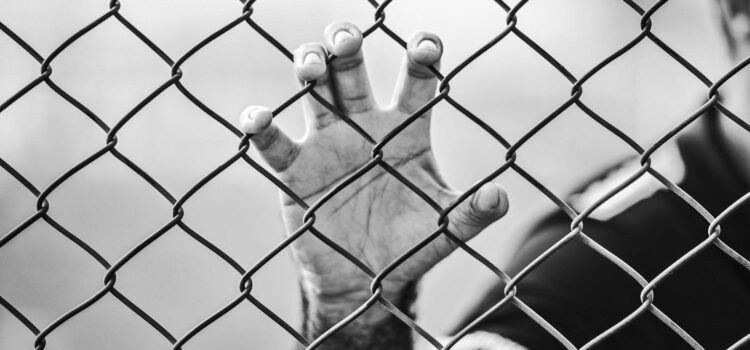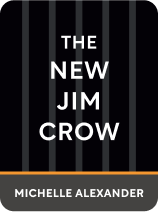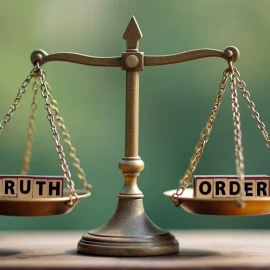

This article is an excerpt from the Shortform summary of "The New Jim Crow" by Michelle Alexander. Shortform has the world's best summaries of books you should be reading.
Like this article? Sign up for a free trial here .
What is mass incarceration? How is mass incarceration the new Jim Crow?
Mass incarceration and race show a significant connection. Because of this, Michelle Alexander argues that mass incarceration is the new Jim Crow.
Read more about mass incarceration, The New Jim Crow, and the mass incarceration of African Americans.
Mass Incarceration: The New Jim Crow
Alexander argues that the public is in denial about the magnitude of the mass incarceration (the New Jim Crow) problem. Obama lectures on too many black fathers missing, and black women complain about not finding good black men, but they rarely point to a major cause – mass incarceration of African Americans.
Even worse, the war on drugs and mass incarceration is now a fact of life, and racial stereotypes are now embraced broadly, even by some black people. Possibly to resolve cognitive dissonance, people argue that criminals chose to commit criminal actions, and they deserve the punishment. They think, “the criminal justice system is now colorblind, so any correlation of arrests with race must reflect intrinsic behavior traits, not systematic racial bias.” Thus, mass incarceration and race go hand-in-hand.
Draw an analogy to a birdcage, wherein if you think about racism by examining only one wire of the cage, it’s difficult to understand why the bird is trapped. The New Jim Crow is a birdcage, a set of structural arrangements that subjugates a race politically, socially, and economically.
In summary, the mass incarceration (the New Jim Crow):
- Uses the War on Drugs to arrest large numbers of black men, through strong financial incentives and legal protection of discretion that may be racially biased.
- In essence, black men are made criminals at higher rates than white men, despite not having significantly higher rates of drug crime. So, it is mass incarceration of African Americans.
- Hands down disproportionately harsh sentences to black men and limits effective legal representation.
- Imposes sanctions on ex-criminals outside of prison that prevent reintegration and encourage recidivism.
- (Shortform addition: This environment (absent fathers, racial stigma) disadvantages black youth and adds them back into the cycle.)
History Repeats Itself
Like mass incarceration, the New Jim Crow bears many similarities to the old Jim Crow – the desire of white elites to exploit the vulnerabilities of poor whites; legalized discrimination; political disenfranchisement.
Here are less obvious parallels to Jim Crow, especially considering mass incarceration and race:
- Racial segregation
- During Jim Crow, segregation compartmentalized black experience from whites, making it easier to maintain racial stereotypes and deny suffering.
- Some historians argue concentration of blacks in urban neighborhoods is a consequence of deliberate government policies meant to perpetuate segregation.
- Mass incarceration does the same, stuffing black men in prisons out of sight, even further away than Jim Crow segregation did.
- Prisoners returning home concentrate further in poor neighborhoods, which have limited resources.
- During Jim Crow, segregation compartmentalized black experience from whites, making it easier to maintain racial stereotypes and deny suffering.
- Symbolic production of race
- Slavery defined being black as being a slave. Jim Crow defined being black as being a second-class citizen. Mass incarceration defines being black as being criminal.
- Experiment: react to this statement: “we really need to do something about the problem of white crime.” If this sounds a little odd to you, reflect on how natural “black crime” sounds.
- What it means to be a criminal has become conflated with what it means to be black.
- A black person’s first time of being arrested or searched hammers home: “this is what it means to be black.”
And compared to the old Jim Crow, there are differences that make the current situation possibly even more difficult:
- Racial stigma defeats racial solidarity
- The stigma of black criminality has turned the black community against itself, in contrast to black solidarity during the civil rights era. This makes it harder to unify a community against unfair policies.
- Politicians who support tough on crime policies can hold up black supporters as proof that they’re not being racist.
- Absence of racial hostility
- Things have improved in many respects – a majority of Americans oppose racial discrimination. There are no longer signs of “whites only” schools.
- Some may use this to claim that things are fine as is. It leads to a sense of complacency, that things don’t need to change.
- But just because there isn’t overt racial hostility doesn’t mean the current system isn’t racially biased. It would be impossible to imagine mass incarceration of young white men.
- White victims of racial caste
- Some reject the problem based on the idea that whites are also harmed by the war on drugs and incarceration, as opposed to clear white superiority in Jim Crow times. This makes it easier to see the criminal justice system as colorblind.
- Alexander argues that white people are collateral damage in the concerted racialization of crime in politics and media. The goal from the beginning was to build a racial caste system, and whites getting caught in it is not proof otherwise.
- Black support for “get tough” policies
- Some argue: in contrast to Jim Crow, many blacks seem to support the current system, wanting more police and order in their crime-ridden neighborhoods. In fact, ignoring crime in poor urban communities would be racial discrimination.
- The truth isn’t so simple, but black communities are torn between loving their own and abhorring gangs and violence.
- Furthermore, black people have little to gain and much to lose by countering the rules of the establishment, which can make their complicity deceptive. This has been true of black elites in the Jim Crow era.

———End of Preview———
Like what you just read? Read the rest of the world's best summary of Michelle Alexander's "The New Jim Crow" at Shortform .
Here's what you'll find in our full The New Jim Crow summary :
- How the US prison population increased 10x in 30 years because of harsh drug policies
- How being "tough on crime" was deeply motivated in discrimination against black people
- Why being convicted for a crime is essentially a life sentence of poverty and return to prison






